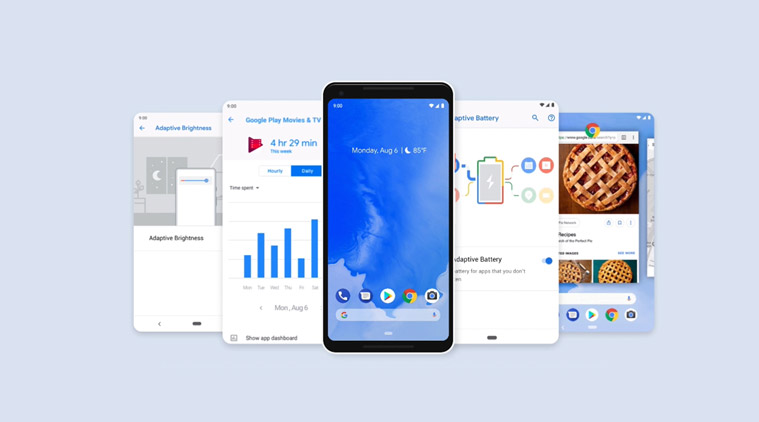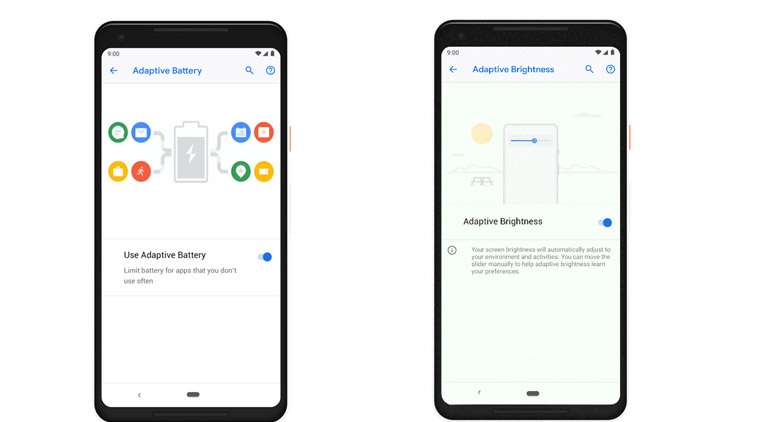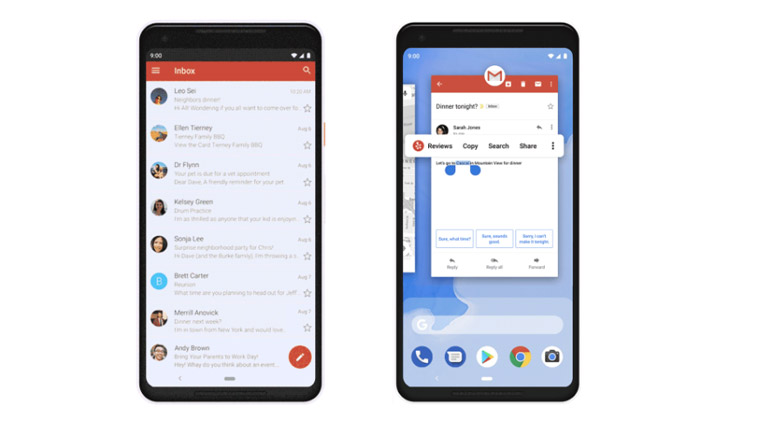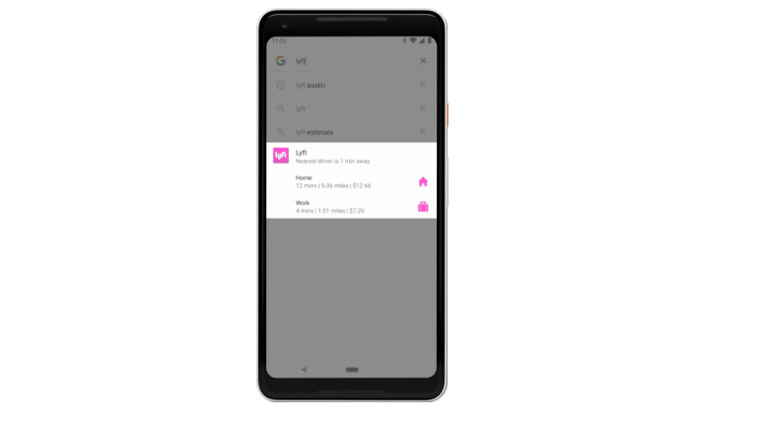 Google’s Android 9 is called Android P: A look at which smartphones will get this, as well as full list of features.
Google’s Android 9 is called Android P: A look at which smartphones will get this, as well as full list of features.
Google has revealed Android 9 will officially be called Android Pie, and the latest version of the mobile operating system has started rolling out to Pixel, Pixel XL, Pixel 2 and Pixel 2 XL smartphones. With Android Pie, the focus is on artificial intelligence, which will power the user experience on the OS.
Android 9 Pie also comes with a new Android Dashboard to let users monitor their usage, how much time they spend on apps, etc. The idea is to promote “digital wellbeing” of users, though the feature will be fully rolled out in fall, says Google.
Android 9 Pie: Which smartphones will get this first?
The Android Pie or Android 9 update is around 1173.0 MB in size or nearly 1.173GB. So make sure if you start downloading this you are doing it on a stable WiFi connection, rather than relying on cellular data. The Android Pie or Android 9 update is for now available only on Pixel and Pixel 2 devices. This includes: Pixel, Pixel XL, Pixel 2 and Pixel 2 XL.
So what about other non-Pixel devices? When will other smartphones get Android Pie? According to a Google’s blogpost, devices that participated in the Android P Beta program from Sony Mobile, Xiaomi, HMD Global, Oppo, Vivo, OnePlus, and Essential, and all Android One devices, will receive this update by the end of this fall.
This includes Nokia 7 Plus, OnePlus 6, Xiaomi Mi Mix 2S, Sony Xperia XZ2, Oppo R15 Pro, Vivo X21, and Essential PH‑1. It should be noted that all phones with Android One branding will also get Android P by the end of fall. This includes all the HMD Global Nokia phones launched in 2018 like Nokia 6.1, Nokia 7 Plus, Nokia 8 Sirocco, Nokia 3.1, Nokia 5.1, etc.
Xiaomi’s Mi A2 series also has Android One branding and we will have to see how quickly the Android P update is rolled out to the phone. Moto G6 is also an Android One phone, though we will have to wait and see when the update is rolled out.
 Android 9 Pie has Adaptive Battery and brightness, both of which are driven by Artificial Intelligence.
Android 9 Pie has Adaptive Battery and brightness, both of which are driven by Artificial Intelligence.
Android 9 Pie: Adaptive Battery, Adaptive Brightness feature
Android 9 Pie relies on artificial intelligence to power many features. Two major features of the new OS are Adaptive Battery and Brightness, both driven by AI. Android 9 can learn from the user’s usage patterns and adapt to them.
Adaptive Battery relies on AI and machine learning to understand which apps are used more, and will prioritise battery for them. It will also inform users how long their battery will last based on user’s habits.
When a user turns on the Adaptive battery feature in the settings of Android Pie, they can limit battery for apps, which they don’t use so much. Google partnered with DeepMind, an AI and ML company owned by its parent Alphabet, for this feature.
Then there’s Adaptive Brightness, which will over time learn the kind of brightness levels a user prefers in different light settings, and automatically adjusts it. Again the feature has to be turned on from the Settings in Android 9 Pie.
Android 9 Pie: App Actions
Another AI driven feature, this one predicts the actions you will do next based on your context and displays that action right on your phone. So if it is Monday morning and you are getting ready for work, Google will suggest navigation to work when you open Google Maps. Or when you plug in headphones, the system will display the option to play music from your regular music-streaming app.
 Android 9 Pie also comes with new App Actions feature.
Android 9 Pie also comes with new App Actions feature.
Android 9 Pie: Slices
Google says this particular feature will roll out in the fall. It will show relevant information from favourite apps when needed. For instance, if one types Lyft in the Google Search app, they will see a “slice” of the Lyft app, showing prices for their ride home and the ETA for a driver. Again this feature will also depend on how many developers decide to take advantage of the same on their app.
Android 9 Pie: New form of Navigation
Android 9 Pie comes with a revamped navigation and has a single home button in the screen. This has been designed keeping in mind the new taller displays with the 18:9 and higher aspect ratio. Android Pie relies on swipes and gestures for navigation, similar to the Apple iPhone X.
 Android 9 Pie comes with a revamped navigation with a single home button in the screen and a redesigned Overview.
Android 9 Pie comes with a revamped navigation with a single home button in the screen and a redesigned Overview.
Users can swipe up from the home button to see the redesigned Overview, which has all the recently used apps. Overview now has full-sized previews of apps, and it is also possible to use Smart Text Selection in this mode. In Smart Text selection, it figures out the meaning of the text one is selecting and gives relevant actions. For instance, if you are copying a phone number, Smart Text will prompt you on whether you want to make a call or message to that particular number.
Android Pie also includes new way to take and edit screenshots, improved volume controls, and a redesigned notifications panel.
Android 9 Pie: Android Digital Wellbeing
The focus with Digital Wellbeing is on letting users monitor the amount of time spent on their smartphone, on a particular app. Users can set app limits for the ones where they feel they spend the most time. Once the app limit is breached for the day, the app’s icon is greyed out. What is not clear is whether a user can continue to use the app, even when it is greyed out.
There is a Do Not Disturb feature, which will silence all visual interruptions that appear on the screen. There’s a Wind Down mode, which switches on Night Light and Do Not Disturb and fades the screen to grayscale before bedtime.
 Android 9 Pie and how the App Slices feature will appear in Google Search.
Android 9 Pie and how the App Slices feature will appear in Google Search.
However, the Android Digital Wellbeing feature with the dashboard will only launch on Pixel phones this fall, with Android One and other devices getting this later in the year.
The feature is available in the Pixel beta, and those running the same, should see the Digital Wellbeing option appear in their device’s Settings. Google says it may take up to 24 hours for Digital Wellbeing to appear on the device after a user signs up for Pixel beta.
Android 9 Pie: Security features
Google is also adding more security in Android 9 with what it calls “industry-leading hardware security capabilities” to protect sensitive data like credit card, etc, with a secure, dedicated chip. Android 9 also brings important privacy improvements in order to keep web communications private.